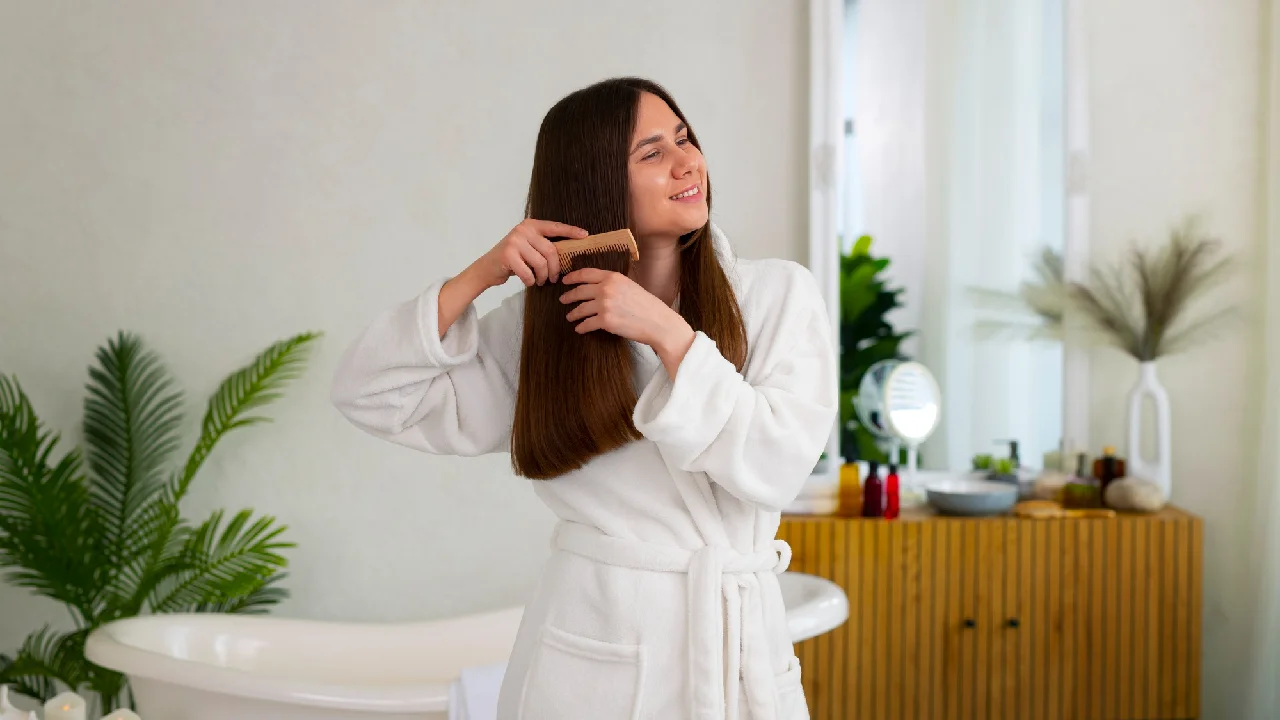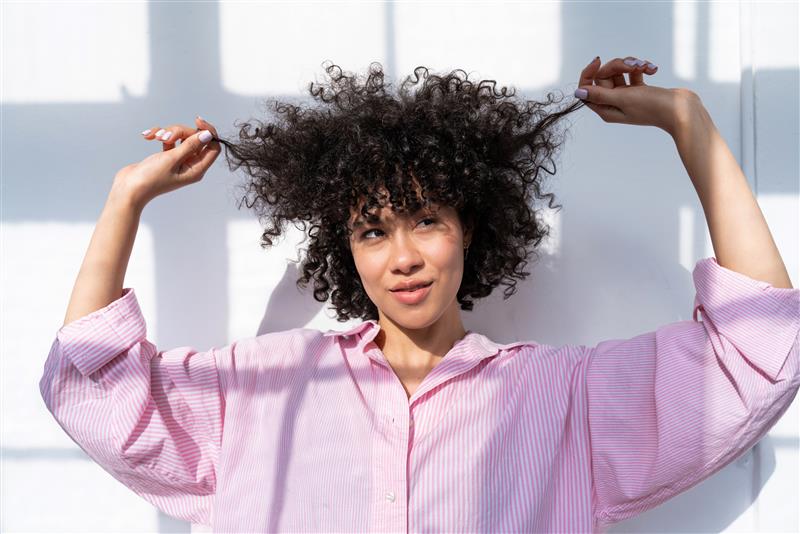Hair Oil vs Leave-In Conditioner: 7 Shocking Differences That'll Transform Your Hair Routine

When it comes to hair care, one of the biggest confusions people face is whether to use hair oil or a leave-in conditioner. Both claim to nourish, smooth, and add shine but their magic works in totally different ways. Hair oil is like food for your strands, packed with nutrients that deeply repair and strengthen. Leave-in conditioner, on the other hand, is your styling hero, lightweight, hydrating, and perfect for daily manageability.
Knowing when and how to use each can make or break your hair routine. If you’ve ever wondered why your hair still feels dry or frizzy despite using all the right products, this breakdown will open your eyes. Let’s explore seven shocking differences that’ll transform how you treat your hair forever!
Table of Contents
1. Purpose and Function
Hair oil primarily focuses on deep nourishment—it penetrates the hair shaft, replenishing lost moisture and repairing internal damage. It’s great for strengthening roots and improving long-term hair health. Leave-in conditioner, however, is designed to smooth and hydrate the hair’s surface, detangling and making it easier to style. While oils feed your hair from within, leave-ins create a protective, lightweight coating that enhances shine and softness instantly. Think of oil as your long-term treatment and leave-in conditioner as your instant hair fix.
2. Absorption Level
Hair oils are formulated to penetrate deeply into the scalp and strands, delivering nutrients where they’re most needed. Natural oils like coconut, argan, or jojoba seep into the cortex, repairing damage over time. Leave-in conditioners, on the other hand, stay mostly on the surface. Their molecules are designed to coat the hair rather than absorb deeply, locking in moisture and smoothing frizz. This makes oils perfect for overnight treatments, while leave-ins are ideal for post-shower, quick hydration.
3. Texture and Feel
Hair oil usually has a thicker, richer texture that can feel slightly greasy if used in excess. It gives a luxurious finish but requires mindful application. Leave-in conditioners, by contrast, are lighter, creamy, or spray-based—easy to apply without weighing hair down. They’re formulated for a silky, residue-free feel. If your goal is effortless softness and manageability without the heaviness, leave-in conditioners are your best friend; but if you crave deep nourishment, oiling is non-negotiable.
4. Timing of Application
Hair oil works best when applied before washing or as an overnight mask. It preconditions hair, preventing dryness caused by shampooing. Leave-in conditioner, however, is applied after washing—on damp, towel-dried hair—to lock in moisture and ease detangling. Oils prep your hair for cleansing and strengthening, while leave-ins protect it during styling and heat exposure. Using both at the right time can create the ultimate hydration routine for soft, manageable, and healthy hair.
5. Impact on Styling
If you love heat styling or blow-drying, leave-in conditioners are a must—they often come with thermal protection that shields your hair from damage. Hair oils, though they add shine, can increase heat sensitivity when applied before styling tools. Instead, use oils as a post-styling finisher for gloss and smoothness. Leave-in conditioners make your hair style-ready and manageable, whereas oils help you achieve that post-style polish and healthy glow.
6. Hair Type Compatibility
Hair oils benefit dry, frizzy, and thick hair types the most—they restore lost moisture and add control. Finer or oily hair types may find heavy oils too greasy. Leave-in conditioners, on the other hand, suit almost every hair type due to their lightweight formulas. They can be tailored—protein-rich for damaged hair or hydrating for curls. Understanding your hair texture helps decide which to prioritize—or how to balance both for optimal results.
7. Long-Term vs Instant Results
Hair oiling is a long-term investment in your hair’s strength and health—it takes time but delivers lasting results like reduced breakage and enhanced shine. Leave-in conditioners offer instant gratification: smoother, detangled, frizz-free hair right after application. Oils heal from the inside out, while leave-ins beautify from the outside in. The secret to salon-worthy hair lies in combining both—using oil for deep repair and a leave-in conditioner for everyday perfection.
What Actually Happens When You Apply Hair Oil
Let’s start with hair oil because honestly, this is where most of the confusion begins.
Not all oils are created equal, and this is something I wish someone had told me years ago. Some oils, like coconut oil and olive oil, are small enough to actually penetrate your hair shaft. They get inside and strengthen from within. But other oils, like mineral oil, sit on top of your hair creating a protective barrier.
Here’s where hair oil really shines: it’s hydrophobic, which means it repels water. When you apply oil to damp hair, you’re essentially locking in that moisture and preventing it from evaporating throughout the day. Think of it like this: your hair is a sponge. Water gets in easily but also leaves easily. Oil is the plastic wrap that keeps everything contained.
[Organic Pitch 1] Products like those found at Good Life For Three understand this science. Their curated selection includes oils with ingredients like Mafura Oil, marula, and baobab, which are specifically chosen for their ability to penetrate and seal without that heavy, greasy feeling.
Leave-In Conditioner Secrets Nobody Talks About
Leave-in conditioners are formulated to add moisture to your hair and keep it there. Unlike your rinse-out conditioner, leave-ins stick around all day providing continuous hydration.
Most leave-in conditioners contain humectants like glycerin, aloe vera, or honey. These ingredients are basically moisture magnets that pull water from the air into your hair. What surprised me most? They’re not just moisturizers, they’re also detangling products, heat protectors, and curl definition boosters all rolled into one.
Hair porosity matters here more than you think. It’s basically how easily your hair absorbs and retains moisture. For low porosity hair (tightly closed cuticles), leave-in conditioners are often better than heavy oils because they’re lighter and can actually penetrate. For high porosity hair, you might need both.
The Biggest Mistake: Getting Product Order Wrong
This is crucial, and yet nobody seems to agree on it. But here’s what actually works: water-based products first, oil-based products last.
Your leave-in conditioner is water-based. If you apply oil first, you’re creating that waterproof barrier, and your leave-in can’t penetrate. So the order should be: damp hair → leave-in conditioner → styling products → oil to seal.
[Organic Pitch 2] This is exactly why products like Miss Jessie’s Curly Meringue work so beautifully in a routine. It’s a lightweight curl cream that layers perfectly under oils, giving you definition without the crunch.
Another mistake? Using products that are too heavy or too light for your hair type. Fine hair gets overwhelmed by heavy oils like castor oil. Thick, coarse hair needs heavier products to actually make a difference.
When to Use What
Use hair oil when your ends feel dry and brittle, you’re using heat styling tools, you live in a dry climate, or you want to add shine. I use oil almost daily on my ends because I’m a recovering heat tool addict.
Reach for leave-in conditioner when you need to detangle after washing, your hair feels dry from the inside, you have low porosity hair, or you’re defining curls.
Can you use both? Absolutely! The catch? You have to use them in the right order and amounts. My current routine: I apply leave-in to soaking wet hair right after showering. Once my hair is about 70% dry, I take a tiny amount of oil and smooth it over the surface, really working it into my ends.
[Organic Pitch 3] Good Life For Three’s Hold Me Down Edge Gel provides smooth, lasting hold without flaking, and because it’s alcohol-free, you can layer it with oils without that weird pilling effect.
Quick Routine Guide
For curly and coily hair, moisture retention is your biggest challenge. Layer products: wash with sulfate-free shampoo, apply leave-in to soaking wet hair, add curl cream, then seal with oil focusing on ends.
Fine hair folks need moisture without weight. Apply leave-in only to mid-lengths and ends, use oil very sparingly (just a drop or two), and consider applying products to damp (not soaking wet) hair.
Damaged or color-treated hair needs both protein and moisture. Use leave-in with strengthening properties and seal with oil every single time.
Frequently Asked Questions
Not really. While oil adds shine and seals moisture, it doesn’t actually moisturize. Hair needs water-based moisture first.
Start small. For short hair, a dime-sized amount. For long hair, maybe a quarter-sized amount. You can always add more.
No. Hair growth happens at the scalp. What oil can do is prevent breakage, which means you retain length better.
It depends on your hair type and the product. I use it after every wash and refresh with water on non-wash days.
Conclusion
After years of trial and error, here’s what I’ve learned: hair oil and leave-in conditioner aren’t competitors, they’re teammates. Leave-in brings moisture, oil seals it in.
The magic isn’t in choosing one over the other. It’s in understanding what each does and using them together strategically. Start simple with one good leave-in and one lightweight oil. Learn how your hair responds to each separately, then together.
Your routine should make your life easier, not more complicated. If something isn’t working, change it. Trust your hair over trends every single time.
Created By: goodlife4three
Recommended Blogs
 Blogs
Blogs Hair Oil vs Leave-In Conditioner
Hair Oil vs Leave-In Conditioner: 7 Shocking Differences That'll Transform Your Hair Routine When it comes to hair care, one...
 Blogs
Blogs What is the Best Hair Oil for Curly Hair? Top 7 Picks for 2025
What is the Best Hair Oil for Curly Hair? Top 7 Picks for 2025 Finding the perfect hair oil for...
